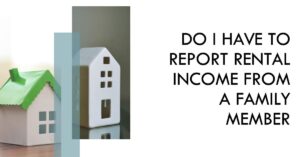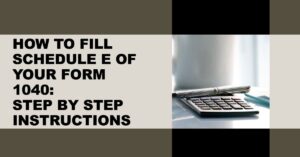If you own a property in the U.S. and rent it out to a family member, you may wonder if you have to report the rental income to the IRS. The answer depends on whether you are renting the property for profit or not, and whether you are charging a fair market rent or not.
Renting for profit vs. not for profit
The IRS considers rental income to be taxable unless there is a specific exception. One exception is if you rent your property for personal use, meaning that you or your family members use it for more than 14 days or 10% of the total days rented, whichever is greater. In this case, you do not have to report the rental income, but you also cannot deduct any rental expenses. You can only deduct mortgage interest and property taxes as itemized deductions on Schedule A.
However, if you rent your property for profit, meaning that you intend to make money from the rental activity, then you have to report the rental income and expenses on Schedule E. You can deduct expenses such as repairs, maintenance, utilities, insurance, depreciation, and management fees. If you have a loss from your rental activity, you may be able to deduct it from your other income, subject to certain limitations.
Fair market rent vs. below market rent
Another factor that affects your tax treatment is whether you charge a fair market rent or a below market rent to your family member. Fair market rent is the amount that a willing tenant would pay and a willing landlord would accept for the property in an open market. Below market rent is any amount that is less than the fair market rent.
If you charge a fair market rent to your family member, then you are treated as a regular landlord and follow the rules for renting for profit or not for profit, as explained above.
However, if you charge a below market rent to your family member, then the IRS may consider your rental activity as a personal use of the property, even if you do not use it yourself. This means that you do not have to report the rental income, but you also cannot deduct any rental expenses. You can only deduct mortgage interest and property taxes as itemized deductions on Schedule A.
There is an exception to this rule if you rent your property to a family member who uses it as his or her main home. In this case, you can treat the rental activity as a not-for-profit rental and report the income and expenses on Schedule E. However, you can only deduct expenses up to the amount of rental income that you receive. You cannot claim a loss from the rental activity.
Summary
To summarize, whether you have to report rental income from a family member in the U.S. depends on:
- Whether you rent your property for profit or not
- Whether you charge a fair market rent or a below market rent
- Whether your family member uses the property as his or her main home
You should consult with a tax professional if you have any questions about your specific situation.
What are the tax implications of renting to a family member in the U.S?
If you own a property in the U.S. and rent it out to a family member, you may face different tax implications depending on how you structure the rental arrangement. Here are some factors to consider:
Profit motive
The IRS will look at whether you intend to make a profit from the rental activity or not. If you do, then you have to report the rental income and expenses on Schedule E and pay tax on any net income. If you don't, then you may not have to report the rental income, but you also cannot deduct any rental expenses. You can only deduct mortgage interest and property taxes on Schedule A as itemized deductions.
Fair market rent
The IRS will also look at whether you charge a fair market rent or a below market rent to your family member. Fair market rent is the amount that a willing tenant would pay and a willing landlord would accept for the property in an open market. Below market rent is any amount that is less than the fair market rent.
If you charge a fair market rent, then you are treated as a regular landlord and follow the rules for profit or not-for-profit rentals. If you charge a below market rent, then the IRS may consider your rental activity as a personal use of the property, even if you do not use it yourself. This means that you may not have to report the rental income, but you also cannot deduct any rental expenses. You can only deduct mortgage interest and property taxes on Schedule A as itemized deductions.
Main home
There is an exception to the below market rent rule if you rent your property to a family member who uses it as his or her main home. In this case, you can treat the rental activity as a not-for-profit rental and report the income and expenses on Schedule E. However, you can only deduct expenses up to the amount of rental income that you receive. You cannot claim a loss from the rental activity.
As you can see, renting to a family member in the U.S. can have different tax implications depending on how you set up the rental agreement. You should consult with a tax professional if you have any questions about your specific situation.


